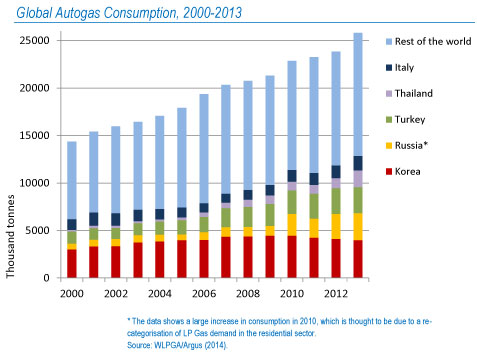Choosing an Alternative Fuel for Our Cities

Who will you meet?
Cities are innovating, companies are pivoting, and start-ups are growing. Like you, every urban practitioner has a remarkable story of insight and challenge from the past year.
Meet these peers and discuss the future of cities in the new Meeting of the Minds Executive Cohort Program. Replace boring virtual summits with facilitated, online, small-group discussions where you can make real connections with extraordinary, like-minded people.
It’s Not Only About Policy, but a Proper Application Decision
Over 24 million autogas vehicles are in operation throughout the world, utilizing more than 70,000 Autogas refueling sites. Autogas, the term for LP Gas when used in the transportation sector, is the second most widely-used alternative fuel in the world after ethanol. Its use as a transportation fuel varies widely by country. Turkey has 17% of its vehicles running on autogas, Poland 11%, South Korea 10%, and India 8%, while in the United States, less than 1% of vehicles run on autogas.
In the United States, autogas has received little attention despite its many benefits:
- It reduces harmful emissions by 35% and CO2 by 18% versus gasoline.
- 100% of LP Gas is domestically produced. In fact, projections are that more than 6 billion gallons of LP Gas will be exported in 20 15!
- Over the past eight years, autogas has average $1.35 less per gallon than gasoline.
Autogas is one of the most viable alternative fuels available today. Its energy content does not come from coal-fired power plants, it does not require toxic battery technology that will end up in our landfills, and unlike compressed natural gas, autogas does not require expensive fuel storage tanks and refueling sites that cost millions of dollars.
Why would city, state, and federal governments encourage the use of autogas and what are the most common policy initiatives?
The main justification for governments to promote the use of autogas is to reduce the environmental impact of transport activities. They can promote the use of autogas through regulatory schemes and financial incentives.
Regulatory Options
- The most direct means is the use of legal mandates on public or private organizations to purchase a fixed number of AFVs.
- Levy charges on polluting activities
- Provide HOV lane access to autogas vehicles
- Traffic-control regulations can be also be used to favor alternative fuel vehicles. For example, AFVs may be granted exemptions from city or highway-driving restrictions such as those imposed on peak-pollution days.
Financial Options
In principle the most economically efficient approach to internalizing external costs is one that relies mainly on financial incentives i.e. a market-based approach.
- Provide low interest financing for autogas vehicle “upfits” or the incremental costs associated with original equipment manufacturer vehicles with alternative fuels.
- Provide rebates for the incremental costs associated with alternative fueled vehicles.
- Alternative Fuel Tax Credits – Reduce state and federal fuel taxes.
- Provide tax credits for the installation of alternative fuel refueling sites.
Other Measures
Governments can support the research, development, and demonstration of alternative-fuel technology.
- Direct funding through voluntary agreements with manufacturers or vehicle technology providers.
- Information dissemination and education – This approach may take the form of regular communications, such as websites or newsletters, to inform the public of market and technology developments and to indicate how to apply for available subsidies.
Is There another Missing Piece to the Government Policy Puzzle?
 Even if government and policy incentives create favorable conditions to deploy autogas or other alternative fuels, an important step is often omitted. The right alternative fuel must be chosen for the vehicle application. Vehicle operating profiles, mission requirements, and fuel usage are among the many factors to consider. For example, if the operating profile of a vehicle dictates that it must drive 250 miles per day with a heavy load, an electric vehicle will not make as much sense as an autogas vehicle. However, if the vehicle is used on a short fixed route with much starting and stopping, the electric vehicle may prove superior. Popular is the ever-growing Zipcar car sharing and car club service market, whereby the choice of hybrid or a hydrogen cell battery vehicle may be good for that industry.
Even if government and policy incentives create favorable conditions to deploy autogas or other alternative fuels, an important step is often omitted. The right alternative fuel must be chosen for the vehicle application. Vehicle operating profiles, mission requirements, and fuel usage are among the many factors to consider. For example, if the operating profile of a vehicle dictates that it must drive 250 miles per day with a heavy load, an electric vehicle will not make as much sense as an autogas vehicle. However, if the vehicle is used on a short fixed route with much starting and stopping, the electric vehicle may prove superior. Popular is the ever-growing Zipcar car sharing and car club service market, whereby the choice of hybrid or a hydrogen cell battery vehicle may be good for that industry.
Unless the fleet operator, whether a public or private entity, properly evaluates the best energy source for the vehicle operating profile, inaccurate choices will be made.
Do government policy and incentives work? Yes, if they are properly crafted and the fleet operator evaluates all options that meet their application requirements.
Policy information for this blog was provided by the World LP Gas Associations recently updated 2014 report , ”AUTOGAS INCENTIVE POLICIES- a country-by-country analysis of why and how governments encourage AutoGas and what works ” and may be viewed in its entirety at http://www.auto-gas.net/newsroom/129/31/Autogas-Incentive-Policies-Update#.VG-rNE1OWSA.
Discussion
Leave your comment below, or reply to others.
Please note that this comment section is for thoughtful, on-topic discussions. Admin approval is required for all comments. Your comment may be edited if it contains grammatical errors. Low effort, self-promotional, or impolite comments will be deleted.
Read more from MeetingoftheMinds.org
Spotlighting innovations in urban sustainability and connected technology
Middle-Mile Networks: The Middleman of Internet Connectivity
The development of public, open-access middle mile infrastructure can expand internet networks closer to unserved and underserved communities while offering equal opportunity for ISPs to link cost effectively to last mile infrastructure. This strategy would connect more Americans to high-speed internet while also driving down prices by increasing competition among local ISPs.
In addition to potentially helping narrow the digital divide, middle mile infrastructure would also provide backup options for networks if one connection pathway fails, and it would help support regional economic development by connecting businesses.
Wildfire Risk Reduction: Connecting the Dots
One of the most visceral manifestations of the combined problems of urbanization and climate change are the enormous wildfires that engulf areas of the American West. Fire behavior itself is now changing. Over 120 years of well-intentioned fire suppression have created huge reserves of fuel which, when combined with warmer temperatures and drought-dried landscapes, create unstoppable fires that spread with extreme speed, jump fire-breaks, level entire towns, take lives and destroy hundreds of thousands of acres, even in landscapes that are conditioned to employ fire as part of their reproductive cycle.
ARISE-US recently held a very successful symposium, “Wildfire Risk Reduction – Connecting the Dots” for wildfire stakeholders – insurers, US Forest Service, engineers, fire awareness NGOs and others – to discuss the issues and their possible solutions. This article sets out some of the major points to emerge.
Innovating Our Way Out of Crisis
Whether deep freezes in Texas, wildfires in California, hurricanes along the Gulf Coast, or any other calamity, our innovations today will build the reliable, resilient, equitable, and prosperous grid tomorrow. Innovation, in short, combines the dream of what’s possible with the pragmatism of what’s practical. That’s the big-idea, hard-reality approach that helped transform Texas into the world’s energy powerhouse — from oil and gas to zero-emissions wind, sun, and, soon, geothermal.
It’s time to make the production and consumption of energy faster, smarter, cleaner, more resilient, and more efficient. Business leaders, political leaders, the energy sector, and savvy citizens have the power to put investment and practices in place that support a robust energy innovation ecosystem. So, saddle up.







0 Comments